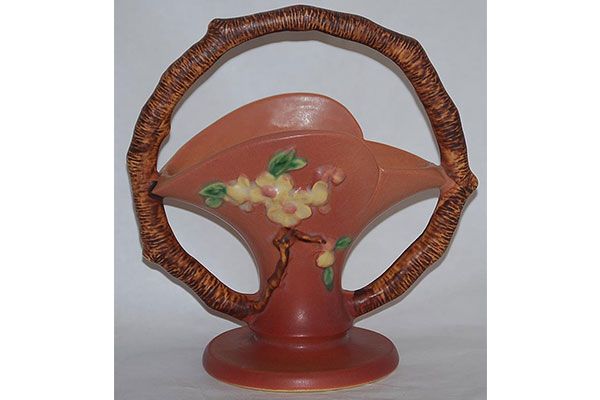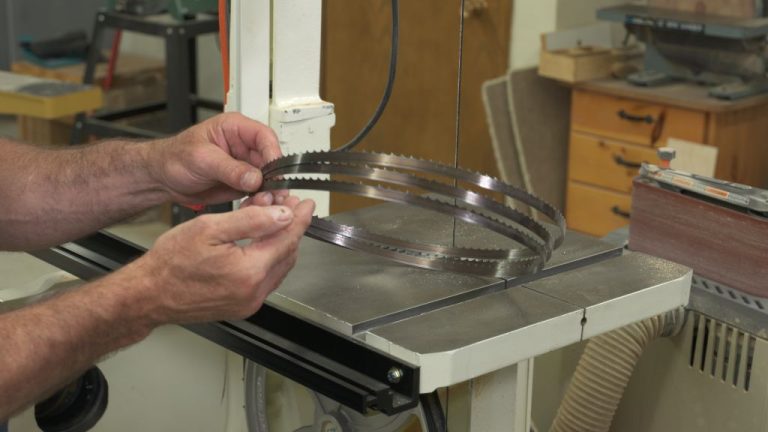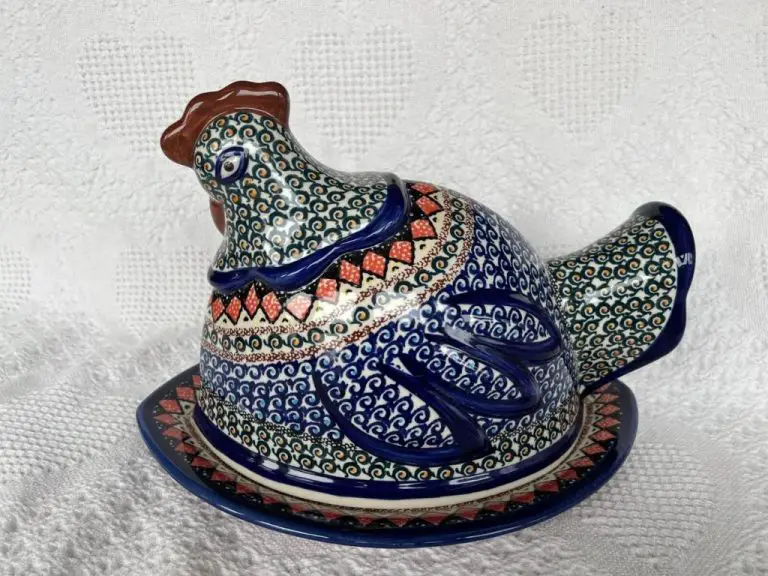Is Roseville Pottery Worth Anything?
Roseville Pottery was an American pottery company founded in Roseville, Ohio in 1890 by George F. Young and J.F. Weaver. The company quickly grew and by 1915 was the largest pottery manufacturer in the world. Roseville became known for producing high quality art pottery in a variety of styles and patterns.
Some of Roseville’s most popular lines included Rozane, Baneda, Cherry Blossom, Apple Blossom, Tourmaline, Azurean, Clematis and more. The pottery featured detailed hand painting, rich glazes, and innovative shapes. Pieces ranged from vases and jardinières to wall pockets, candle holders, and figurines. Roseville wares were sold across America in department stores and through mail order catalogs.
The company operated until 1954 when it closed due to declining sales. Today, Roseville pottery is highly collectible and sought after by antiques dealers and collectors. The age, style, condition, and rarity of a piece determines its value.
Factors That Determine Value
There are several key factors that determine the value of Roseville pottery pieces:
Age – Older pieces from the early 1900s tend to be more valuable than those from the 1940s-1950s. Pieces from Roseville’s early Art Nouveau and Art Deco periods are especially sought after.
Condition – Pieces in pristine, mint condition with no damage, repairs, or paint loss will fetch higher prices than those with wear, chips, cracks, or other flaws. Even minor damage can significantly decrease value.

Rarity – Rare patterns and shapes tend to command premium prices. Unusual glazes and decorations also make a piece more valuable. Limited production runs increase rarity.
Designer – Pieces designed by famous Roseville artists like Frederick Hurten Rhead bring higher valuations from collectors.
Pattern/Shape – The most popular Roseville patterns like Blackberry, Apple Blossom, and Clematis tend to be more valuable, as do rare and unusual shapes.
Color – Uncommon colors like turquoise and custard yellow can increase value. Multi-colored pieces also often fetch higher prices.
Most Valuable Roseville Lines
When assessing the value of a piece of Roseville pottery, one of the most important factors is the line or pattern it belongs to. Some Roseville lines consistently fetch higher prices than others at auction and through dealers.
Three of the most valuable and coveted Roseville lines are:
- Baneda – Introduced in 1915, the Baneda line features a matte green decorative glaze. Pieces such as vases and jardinières can sell for thousands of dollars due to the intricate artistic glazes.
- Zephyr Lustre – First introduced in 1935, Zephyr has a crystalline glaze effect with earthy blue, green, and brown tones. As a scarce line, undamaged Zephyr pieces can command prices over $1,000.
- Donatello – Featuring ornate Renaissance-inspired bas relief motifs, Donatello was introduced in 1938. Rare one-of-a-kind production pieces and full sets can sell for many thousands.
These lines stand at the peak of Roseville pottery prices due to their stunning glazes, scarcity, and demand from collectors. Pieces from Baneda, Zephyr, and Donatello in excellent condition command premiums at auction and in antique markets.
Condition and Damage
The condition of a piece of Roseville pottery plays a huge role in determining its value. Crazing, chips, cracks, and restoration can significantly impact prices.
Crazing refers to the fine cracks that appear on the glaze surface of pottery. It’s caused by instability between the clay body and glaze. Moderate crazing typically doesn’t affect value too much, but extensive crazing can decrease value by 50% or more. Severe crazing may indicate hidden structural issues.
Chips and cracks are more serious forms of damage. Even small chips along the base or rim can reduce value. Larger chips, cracks, and cracked glaze result in pieces worth a fraction of their undamaged value. Fully intact examples command premium prices.
Some collectors restore damaged Roseville pieces through professional repair services. However, even expert restoration leaves evidence and impacts value. Sellers must disclose any restoration. Well-repaired pieces with minor original damage retain collectibility. But restoration cannot recreate lost value from significant damage.
In general, condition issues are evaluated based on location, severity, and impact on structural integrity. Pristine examples and rare, one-of-a-kind pieces will retain highest value. Heavily damaged and poorly restored pieces have decorative value only.
Rare and Unique Pieces
Some of the most valuable Roseville pottery pieces feature experimental glazes, rare colors, and one-of-a-kind designs. According to Etsy, collectors seek out uncommon glaze colors like green, turquoise, and coral pink. Pieces like the famous Spider Web vase with its delicate spun sugar-like threads command high prices. Also prized are the unique “offhand” vases thrown by master potters like Fred Bauer with their asymmetrical shapes and thick uneven glazes. Limited edition lines like the iridescent Caprice and crystalline Velmoss are more valuable due to small production runs. And innovative techniques like airbrushing resulted in novel effects rarely replicated. Overall, Roseville collectors covet the unusual – pieces exhibiting the most creativity, color, and craft.
Authenticity
When determining the value of Roseville pottery, it’s crucial to confirm the authenticity. Roseville marks should include “Roseville” and often “USA” along with the pattern name or number. According to this guide, look at the unglazed bottom of pieces – authentic Roseville has a distinctive rough and bumpy quality. Reproductions often lack the USA marking and have smoother unglazed bases.
Beware of sophisticated fake Roseville marks that can fool even advanced collectors. As noted by The Spruce Crafts, some fakes mimic the Roseville script logo and patterns. Carefully examine pieces for other signs likeexcessive glaze drips, soft mold lines, or colors not true to the original.
When possible, consult an expert appraiser to authenticate before purchasing rare or expensive Roseville. Having confidence in authenticity is key to realizing full value.
Where to Buy or Sell Roseville Pottery
If you’re looking to buy or sell Roseville pottery, there are several places you can check both online and in-person:
Auctions: Auction houses like Sotheby’s, Christie’s, and smaller local auctioneers often feature Roseville pottery in their sales. These are good places to find rare and valuable pieces. Be prepared to pay auction premiums on top of the hammer price.
Estate Sales: Estate sales in areas where Roseville pottery was popular can turn up great finds. Arrive early and be prepared to haggle. Consider checking sales in Ohio, where the Roseville pottery factory was located.
Antique Stores and Malls: Many antique stores and malls have sections dedicated to American pottery. Carefully inspect pieces for damage and research fair prices before purchasing.
Online Marketplaces: Sites like eBay and Etsy feature Roseville pottery from many different sellers. Read reviews and check return policies when buying online.
Specialized Dealers: There are dealers that specialize specifically in Roseville and other American art pottery. They can assess value and authenticity. Expect to pay retail pricing.
When selling, aim for venues that attract serious Roseville collectors willing to pay fair prices. Get pieces appraised and consider an auction house for rare items. For common pieces, online marketplaces expose them to the widest audience of buyers.
Current Market Values
The current market value of Roseville pottery varies greatly depending on the line, style, condition, rarity, and demand. According to the Roseville Pottery Price Guide, some of the most valuable and sought-after lines include Zanesville, Della Robbia, Wistaria, Apple Blossom, Baneda, Clematis, and Magnolia.
Very common pieces in ordinary condition sell for $15-50. More rare items can sell for hundreds or even thousands of dollars. For example, a Zanesville vase in excellent condition recently sold at auction for $5,000.
Some of the most valuable and unique finds are rare test pieces, one-of-a-kind special orders, and anomalies. Signed pieces also fetch higher prices. Condition is critical – small flaws, chips, and cracks dramatically decrease value. Perfect mint condition pieces command premium pricing.
In general, vases tend to be the most valuable, followed by pitchers, bowls, and planters. Wall pockets, candle holders, and utilitarian pieces are less collectible. Figurals and sets can also have significant worth if rare.
Future Outlook
While interest in Roseville pottery declined in the late 20th century, it has seen a resurgence in popularity in recent years. Many collectors believe Roseville pottery has strong potential for increased value in the future.
According to one article, “Prices for Roseville pottery hit rock bottom about 10 years ago but have been escalating since as new generations of collectors have discovered the virtues of Roseville’s artistry and.’,'” (source) As more Millennials and Gen Zers become interested in vintage and antique collecting, Roseville’s colorful glazes and Art Deco styling are likely to appeal to their aesthetic tastes.
Certain rare and iconic Roseville lines like Pine Cone and Sunflower are poised to appreciate significantly in value as demand increases and available inventory shrinks. More common Roseville patterns may also see steady price increases. Overall, many experts predict a bright future for Roseville pottery as new generations of collectors enter the market.
Conclusion
In summary, there are several key factors that determine the value of Roseville pottery pieces:
- The most valuable Roseville lines tend to be rare and older lines like Rozane and Della Robbia.
- Condition is critical – damage, repairs, and wear can significantly decrease value.
- Unique, rare, one-of-a-kind pieces command higher prices.
- Authentication by an expert ensures the piece is genuine Roseville.
- Current market trends and demand impact values – some lines become more popular over time.
While Roseville may not be as valuable as other antique pottery overall, certain pieces in excellent condition can still fetch prices in the hundreds or thousands. As with any collectible, scarcity, quality, and demand determine the true worth.




